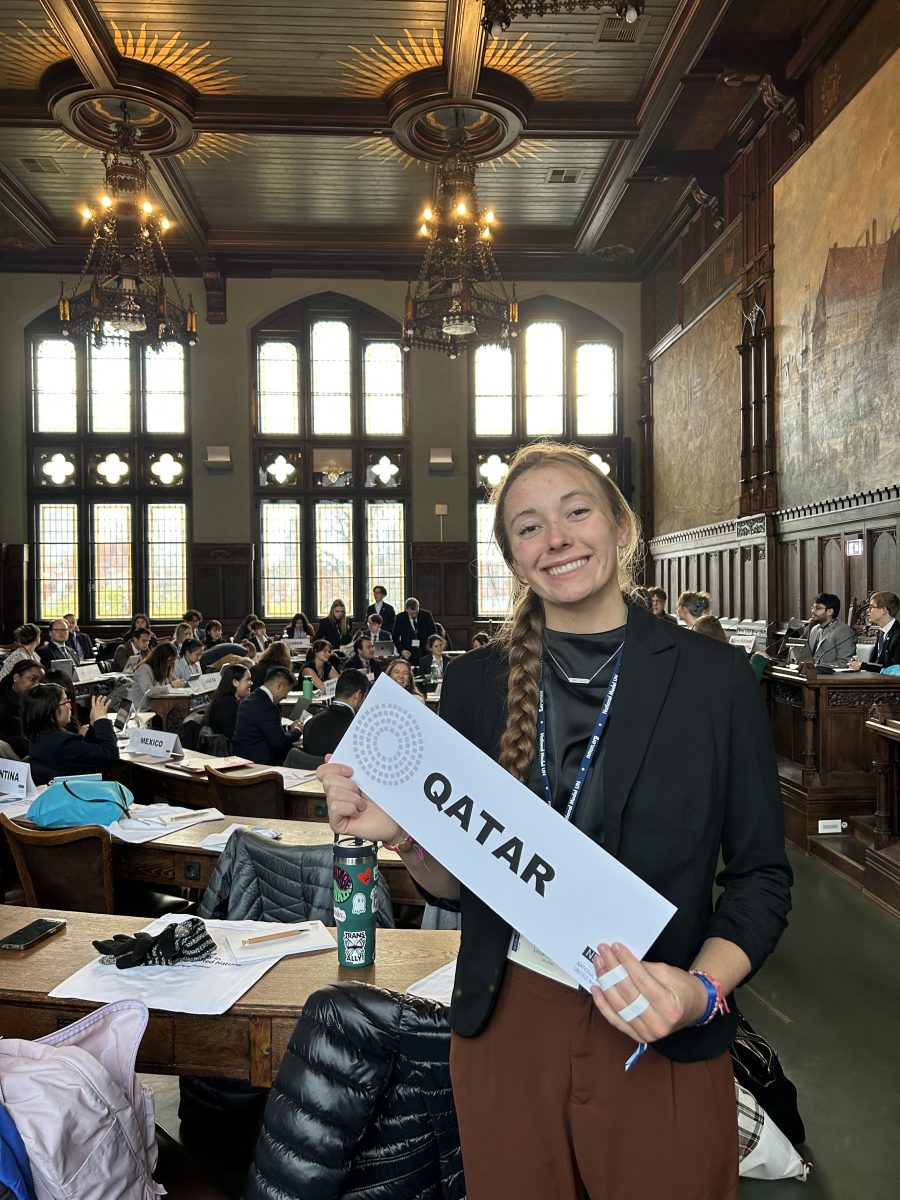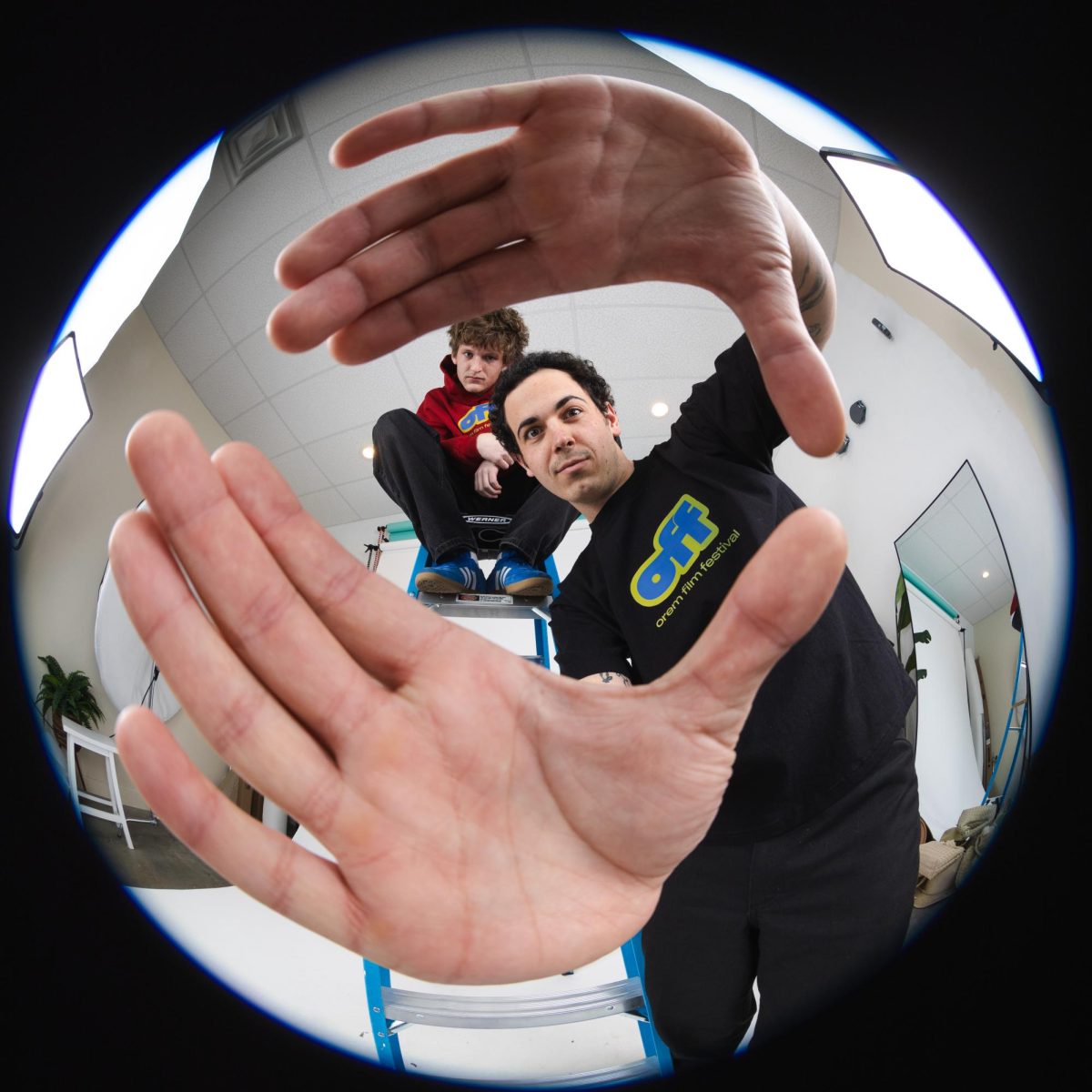Daryn Steed also contributed to this review.
So, this is the way the movie theater industry ends: not with a bang but with a whimper.

After six months of forced closure due to the coronavirus pandemic, 68 percent of movie theaters reopened over Labor Day weekend, according to the New York Times.
Theaters were banking on Christopher Nolan’s new blockbuster, “Tenet,” to bring crowds back in droves; Nolan’s “The Dark Knight,” “Dunkirk” and “Inception” all made billions over their time in theaters, according to the Minneapolis Star Tribune.
But “Tenet,” which cost $205 million to make, made just $9.4 million in its first weekend and just $29.5 million over its first two weeks in North America.
Theaters didn’t reopen in New York or Los Angeles, the two biggest markets in the United States.
Several other factors played into the dismal box office sales: theater capacity was limited to 50 percent or less; “Tenet” is a complicated film with few big names to draw audiences and moviegoers were concerned about safety.
After “Tenet” bombed at the box-office, production studios postponed all upcoming big movies. “Wonder Woman 1984” was pushed to December, “A Quiet Place II” was pushed to April and “Black Widow” was pushed to May. Some studios are considering skipping theater releases altogether and premiering on streaming services instead.
Critics didn’t enjoy “Tenet,” but that’s because critics don’t enjoy having fun. Nolan has had his ups and downs with critics during his filmmaking career.
“The Dark Knight” is tied with “Avengers: Endgame” for the highest-critically-rated live-action superhero movie according to “Rotten Tomatoes.” On the other hand, “Tenet,” “Interstellar” and “The Prestige” all sit firmly in 70 percent critical favorability on the website.
“Tenet” is ambitious and requires more focus than the average blockbuster, but it’s entertaining by any standard.
The Signpost’s resident film critics are back to review “Tenet” and let you know if it’s worth risking your life to see it in theaters.
We’re about to embark on the impossible: reviewing a film that is nearly unexplainable.
The film is helmed by John David Washington, who plays an unnamed character called The Protagonist, and Robert Pattinson, who can actually act, to the surprise of “Twilight” fans circa 2008. They use backward time warps in an attempt to prevent the destruction of the world by egomaniac Andrei Sator, played by an unrecognizable Kenneth Branagh.
While the plot is grueling for first-time viewers, the payoff is worth it. This is also a movie that holds up remarkably well in rewatches, and might even be more enjoyable.
That being said, let’s unpack the biggest sources of confusion and frustration. There’s no fun in talking at length about the good parts of the movie, anyway.
Daryn: The film begins with The Protagonist and a team of CIA agents infiltrating a Russian terrorist attack at an opera house. The Russians, led by “Tenet” villain Sator, are trying to acquire a piece of the Algorithm, a device Sator plans to use to end the world.
After watching the movie twice, I’m happy to report that I still have no idea why the opera scene is in the film at all. It lasts ten minutes and really bears no consequence on the rest of the film. Sator somehow acquires that last piece of the Algorithm even after The Protagonist stops him at the opera house.
Nic: The opera scene introduces us to Pattinson’s Neil, though we don’t know that yet on a first watch. It also introduces us to inverted weapons, though we don’t know that yet either. Finally, it introduces a man who possesses a piece of the Algorithm, who never comes back in the movie and, therefore, seems to ultimately not matter. However, the scene does set up that The Protagonist is selfless and a good guy, so, you know, plot.
D: Let’s discuss Kat. Elizabeth Debicki stars as the villain’s abused wife, who makes several highly questionable decisions throughout the film. The weight of the world is literally on her shoulders multiple times, and by the grace of God and a little movie magic, her mistakes are never costly.
If you’re looking for a film that features powerful women making their mark on the plot, this film is not for you. Kat is a disaster, plainly told, with seemingly no grasp of the significance of her actions. She does whatever she wants whenever she wants, the fate of humanity be damned.
N: Is Debicki a good actress, or is she just tall?
D: The only other woman we see on-screen is Priya, played by Dimple Kapadia. Priya is supposedly the mastermind of the mastermind, always one step ahead of The Protagonist. But in the end, she’s bested by him without much effort on his part. She only gets about six minutes of airtime total, which makes it hard to believe she’s supposed to be orchestrating the end of the world.
N: Nolan sets Priya up as a powerful woman. The Protagonist and Neil go to confront an arms dealer in India: Priya’s husband. After the pair breaks into the arms dealer’s apartment, however, Priya reveals herself to be the brains behind the operation; her husband simply fronts for her in a male-dominated field. It’s like the Bronte sisters changing their names to write, except Priya sells guns.
D: Female villains are sorely lacking in action films. But unfortunately, Priya falls flat, mostly because we aren’t supposed to know she’s the villain until the final seconds of the film.
N: Speaking of women in the movie, the only other woman of consequence in the movie is a scientist, played by Clémence Poésy, probably best known as Fleur Delacour in the “Harry Potter” film franchise, who helpfully explains inversion technology to The Protagonist. It’s good to see Delacour grew up to become a theoretical physicist, but her explanation of the technology makes about as much sense as anything else in the film. Read: next to none.
D: The science behind this movie will make sense if you happen to be a quantum physicist. If not, good luck understanding the mind-boggling action sequences. Buildings collapse and come back together simultaneously, characters can be alive and dead at the same time and armies are moving forward and backward through time concurrently.
N: Neil conveniently does have a masters degree in quantum physics, so he can explain what exactly is going on. Unfortunately, the scene where he’s about to explain everything to Kat cuts away from them before the conversation transpires. Nolan really wanted to make sure viewers knew next to nothing.
D: The tension in the plot relies on the Algorithm. A scientist in the future has created a device that can retroactively destroy the humans who ruined the earth. However, the scientist realizes that killing everyone from the past will simultaneously kill everyone in the future, resulting in the end of the world. She sends the device back in time in parts, thinking nobody from the past will have the technology or information necessary to piece it all together.
N: Sator, however, is selected by the future to put the Algorithm back together. When assembled, its destructive power can be unleashed, reversing the flow of time in the past and erasing the people who eventually cause global climate collapse.
D: Sator is somehow able to communicate with the future using text messages, because… if there are two things that never die, it’s love and emojis?
N: When Sator sends a text message or email in the present, that information stays recorded. The people in the future can then access that information.
D: Which then gets into time flowing non-linearly in the “Tenet” world. But only for some people.
N: The future scientist people have technology that allows them to reverse the entropy of objects, causing them to flow backward in time; i.e., how the Algorithm arrives in our present. This power, called inversion, somehow makes weapons particularly lethal. People can also invert, allowing them to run their personal time backward and enter scenarios with the benefit of seeing their resolution.
Head hurt yet?
The inversion technology comes to a head in the final fight in the film, which takes place as The Protagonist runs forward in time while Neil runs backward.
D: This fight is absolutely insane. The Protagonist and Kat have worked out exactly when Sator decided to end the world. They travel back in time ten days to stop him. To do this, the Tenet army splits up, with half of them moving forward through time and half moving backward.
N: The soldiers moving forward in time enter the fight with the benefit of knowing what the team moving backward already encountered. However, for the purposes of linear time progression, both fights happen simultaneously.
D: The logistics behind filming any of this will make your head spin. Nolan is famously averse to using CGI, but I can’t imagine how he could’ve made this movie work without it. At one point, a collapsed building comes back together, crushing a soldier inside.
N: Then, soldiers detonate the top half of a building while moving forward in time and the bottom half of the same building while moving backward. This is really cool.
Neil’s story also concludes during the final fight, engaging some of the most mind-bending time travel in the movie. Neil is probably the most important character in the movie and he’s definitely the coolest, but his timeline is also the most confusing.
D: Neil and the Protagonist meet after the opera scene at the beginning. They travel to India together to meet Priya and inquire about the Algorithm.
N: Technically, they meet during the opera scene, though, again, we don’t know that yet.
D: Anyway, I’m entirely unsure how Neil and the Protagonist end up in India together, or how they even found out about the Algorithm, but in a film where time is non-linear, there’s crazier shit going on than some minor plot jumps.
All throughout the film, Neil seems to take everything in better stride than The Protagonist. We assume this is because he’s a quantum physicist and can wrap his head around the manipulation of time.
N: However, Neil claims his first introduction to time travel comes from when The Protagonist explains what is going on halfway through the movie. Then, at the beginning of the third act, Neil reveals that he knew what was going on all the whole time as he and The Protagonist discuss paradoxes.
D: All time travel films, from “Back to the Future” to “Avengers: Endgame,” grapple with paradoxes. Most just ignore them altogether, because working paradoxes into the plot is clunky and doesn’t usually solve the problem anyway. “Tenet” takes a different approach, with Neil explaining the grandfather paradox to the Protagonist.
This paradox is a logical problem that arises with virtually every time travel movie. The name comes from the idea that if a person traveled back in time and killed their grandfather, it would make their own birth impossible, making the action of killing their grandfather impossible.
Neil explains this is why the characters in “Tenet” cannot interact with their past selves. They don’t actually know if the grandfather paradox is real, i.e. they have no idea if changing the past would actually change the future. After all, if you’re able to travel back in time to kill your grandfather, it means you’re still alive somehow. But because Neil believes changing the past does change the future, they never change the past.
This creates a very interesting dynamic with the characters’ actions. For example, just before The Protagonist decides they have to go back in time to stop Sator from killing everyone, he poses the question, “We’re here now. So doesn’t that mean we won?”
The Protagonist assumes because they are still alive, ten days following Sator’s attempt to end humankind, they must have defeated him. But Neil explains that’s precisely why they have to go back in time: obviously, they did reverse time to defeat Sator, so they must do it now.
Nolan was able to sidestep potential paradoxes with this explanation, but he also cut off his characters’ agency. As Neil tells The Protagonist, they don’t really have a choice about going back in time. They are stuck in one giant time loop. Everything is predestined. They did go back in time to stop Sator, so they have to go back in time to stop Sator.
N: In the final fight, The Protagonist is just seconds from saving the world when he gets held up by a locked door. He’s in a cave underground, and has no way out. He notices a Tenet teammate with a red badge laying on the other side of the locked door. Just then, the teammate rises from the ground, unlocks the door and gets shot by a bad guy. The Protagonist is able to get through the door and save the world.
After the Protagonist escapes the cave and reunites with Neil, they celebrate their saving the world. The Protagonist thinks they’ve won and now they can go on their merry way, but Neil turns to walk into the cave. We notice that Neil is wearing a red badge, and he says he’s the only person who could pick that lock and help The Protagonist get through the door.
D: Unrelated, but we’re really supposed to believe Tenet has advanced enough technology to move through time, and only one of their members is capable of picking basic locks?
N: I mean but seriously though.
The Protagonist tries to stop Neil. He asks Neil if changing the past really will change the future. But Neil doesn’t even consider it. He knows that he did go into the cave and sacrifice himself to open the door, so that’s what he has to do now.
One of the issues with comprehending Neil’s sacrifice, though, is that Neil also bails The Protagonist out by dropping a rope down into the cave and lifting The Protagonist out before the cave explodes, which allows Neil and The Protagonist to reunite. Therefore, Neil saves The Protagonist twice: once, by unlocking the gate and dying and once by pulling The Protagonist from the cave. He’s Schrödinger’s mixed analogy, alive and dead at once.
D: Before he goes back into the cave, Neil reveals the biggest plot twist yet: he is actually an agent from the future, recruited by the Protagonist at some later date to join Tenet. He had to travel back in time to help The Protagonist stop Sator. He tells The Protagonist “This is the end of a beautiful friendship for me and the beginning for you. We get up to some stuff. You’ll love it.”
N: Meanwhile, everyone’s least favorite character — Kat — has an important role during the final fight: she has to distract Sator so he forgets to kill every living soul.
D: She does this by taking a shower and trying to seduce him on their ridiculously large yacht.
Keep in mind that Sator is emotionally and physically abusive, has torn Kat away from everything she’s ever loved (read: her son) and has no qualms about murdering billions of people from both the past and present. So we can probably assume he’s a psychopath.
Kat succeeds in distracting Sator for a few minutes, and even seems to convince him that she still loves him.
(Again: abusive, genocidal, psychopathic.)
Then, for really no reason at all, Kat decides she wants to kill Sator. This is a terrible idea, because Sator dying will set off a bomb that will trigger the Algorithm and end the world.
N: Kat is allowed to kill Sator, but only at the pre-approved time, after the heroes manage to get the Algorithm away from the bomb.
D: But Kat doesn’t care about that, because she doesn’t want Sator to die thinking he won. She reveals that she is actually from the future, knows about his plan and kills him. There’s a really grotesque moment where she throws Sator off the yacht and he breaks his neck against a railing on the way down.
N: However, the heroes don’t pay a price for Kat jumping the gun. She says she knew they’d find another way. Apparently they did.
Now, for the finale of the movie, before the characters go back in time to stop Sator from destroying the world, The Protagonist hands Kat a phone. He tells her that if she ever needs help, she should send a text or leave a voicemail on the phone, and no matter how far in the future he is, he will receive the message eventually, invert, and come back to help her.
This comes around when, in the final scene of the movie, Kat meets her son to pick him up from school. She spots a strange car parked in a position where the driver can watch her, pulls out the phone, and leaves a voicemail.
The cameras pan to the car, where we see Priya watching Kat. This is menacing for some reason.
D: Again, Priya is an underdeveloped villain, and at this point we don’t even realize she’s a villain yet.
N: The Protagonist arrives in the car, where he reveals not only that he was the one providing Priya the information in the future, he also founded Tenet. He just didn’t know it yet in the present. The final scene of the movie cuts to black as he fires a gun, presumably killing Priya.
After hours of conversation, we decided that Priya probably intended to kill Kat because Kat killed Sator. This theory would assume that Priya had traveled back in time to kill a younger Kat. If younger Kat died, she would have never been able to kill Sator, thereby ensuring he was able to trigger the Algorithm and end the world. Maybe.
D: Considering none of these people know whether or not the grandfather paradox is real, it’s hilarious that they travel back and forth between time trying to kill each other, and even sacrificing themselves, under the assumption that it is. Why don’t we have one character who just takes a shot in the dark and ignores the paradox altogether?
Also, up for debate if we could have chosen a more confusing film to review.
In summary: time travel, bad female characters, great action sequences and a headache on the drive home. 10 out of 10, see it twice.



















